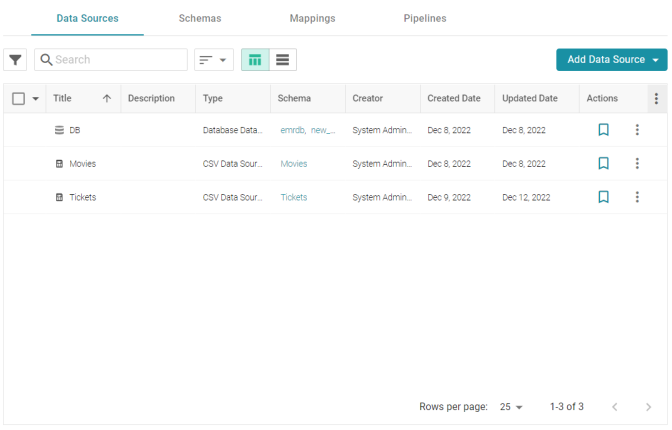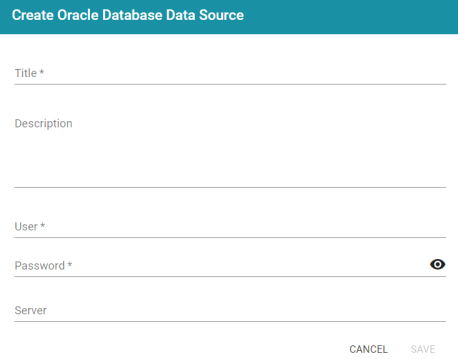Connecting to a Database
Follow the instructions below to connect to a database data source, such as a Microsoft, Oracle, Hadoop, Teradata, PostgreSQL, or Google database.
- In the Anzo application, expand the Onboard menu and click Structured Data. Anzo displays the Data Sources screen, which lists any existing sources. For example:

- Click the Add Data Source button, select Database Data Source, and then choose the type of database to connect to. Anzo opens the Create Database Data Source screen for the type of database that you chose. For example:

- At the top of the screen, specify a Title for the source, and enter an optional Description.
- Enter any additional details and the credentials that are required for making the source connection. The options that appear depend on the type of database connection:
- User: Type the user name used to log in to the database.
- Password: Type the password for the user.
- Server: Type the server name or IP address for the source. Include the port if necessary.
- Database: If necessary, type the partition that contains the data.
- Extended Properties: For Hadoop Hive or Impala databases, enter the extended attributes that you use.
- Click Save to save the data source connection. Anzo displays the Tables tab. Before proceeding to select or create a Schema, you may want to test connectivity to the database. To do so, click the Overview tab and then click the Test Connectivity button. If the connection fails, adjust the data source details until the connection is successful.
Only the connection between Anzo and the database is tested. Connectivity is not tested between AnzoGraph and the database. If you use the direct data load workflow to onboard data directly to a graphmart, Cambridge Semantics recommends that you perform a manual test to ensure that AnzoGraph can also connect to the database.
After connecting to the source, the next step is to add one or more schemas. See Defining a Database Schema for instructions.